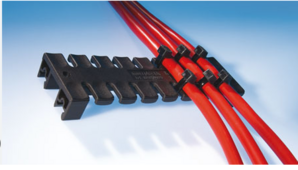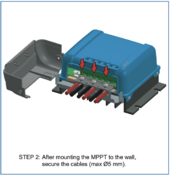Hang on... that link you sent seneysolar shows its charging profile: flooded @ 14.1V and sealed @ 14.4V, with a reconnect at 12.6V. Wouldn't the flooded setting also work on the LiFePO4? (aside from it trying to equalize, that would be a concern). My CanadaProof is set to LTO settings because it stops at 14.0V.
Especially for the off-roading you're describing, I recommend getting a controller that will allow you to charge and float at what you want and not use a "standard" charge profile.
For me, 14.1 flooded lead acid would be good IF equalization could be disabled. Many "standard charge profiles" enter equalization automatically once a week for an hour. This is 3.525 per cell.
14.4 is a 3.6 volts per cell and a little too close to the 3.65 limit. Drifting out of balance becomes more likely with a high charge voltage.
I take my fifth wheel off road, but not like you're describing, and I set lower limits in case something happens. I prefer a lithium charge voltage of around 13.9 volts, or 3.475 per cell. That's 95% capacity. I've had a cell connection come loose and be unbalanced. Between monitoring individual cell voltage, and charging 95%, I caught the overvoltage cell and this prevented a runaway cell.
So here is my question then; my LiFePO4 voltage spikes to 16.0V and above if chargers are set to absorb over 14.1V (my bms is faulty)...
I've heard of faulty charge controllers spiking to 16.0. I would expect the higher you charge and the more often its done the voltage would drift and a single cell would exceed BMS cell voltage and shut down.
=================
I am on the Victron Band Wagon and they are not that hard to install, especially if the everything else is in. This would secure terminals:

There's not a lot of money in RV and vehicle solar installs and it's hard to get someone to do a good job at it for that amount of money. Especially if the build is tested and QC'd prior to delivery.




